► Cupra electric plans
► More EVs on the way, including a sports car
► Tavascan in 2024, Raval city car in 2025
Cupra is quickly becoming the Volkswagen Group’s most exciting brand. It’s pitching itself as the apple cart-kicking challenger brand – and it’s targeting young electric car buyers. The formula’s working, too. In just five years, the company sold 400,000 cars, 150,000 of which found homes in the first half of 2023 alone.
That’s cracking pace for a new car company, but Cupra’s CEO Wayne Griffiths isn’t satisfied with the results. He wants more – and, in an interview at the 2023 Munich motor show, he outlined his ambitions for the Cupra brand’s direction over the next few years.
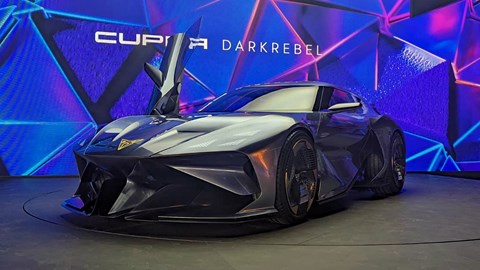
He has two key goals for the company. First, he wants a halo Cupra electric sports car at the top of his line-up that will attract buyers to the brand. It’s called the Cupra DarkRebel (above) and, although it’s still a concept for the time being, there’s a good chance Griffiths will drive it down the production line in the coming years. He did it with the Cupra Tavascan and he wants to do it again now.
Next, Griffiths wants to take Cupra global and expand into the United States. ‘In terms of global ambition, if you want to be a strong brand, you need to be a global brand,’ he said. ‘And to be a global brand, you need to be in the US as well. Going to the US is not a decision we take lightly because if you go to the US not well prepared, you know, you’re not going to last very long.
‘So, we go there, we only go if we are totally prepared. But does that mean? Prepare means that we know that the brand’s going to work there. So, we’re testing the brand with target groups in the US in specific market areas – west coast, east coast, down south – where we think Cupra could work.’

However, Griffiths understands that Americans don’t take kindly to European cars. Drivers have different requirements on the other side of the Atlantic so, instead of simply turning up with a Born and Raval and expecting the Americans to conform to European conventions, Griffiths and his team are working to create a new range of Cupra cars for the US market based on Volkswagen’s American market vehicles. Naturally, they’ll be bigger – and some could still have combustion engines.
‘It needs to be a specific production portfolio for the US. Going with small European cars to the US is not a great recipe for success. So, unfortunately, although the Cupra Raval is a great car, it’s probably not the car for the US. The good thing in our group is that our group has so many platforms and so many possibilities that could be possible to do a car that would fit with the US and a bigger SUV, a crossover SUV that would fit with the US market.’
How does SEAT fit into Cupra’s mission?
That remains to be seen. Cupra’s parent brand has been quiet for a few years now, but its short-term fortunes have improved due to increased semiconductor supplies. SEAT sales rose 13.6 per cent in the first half of 2023.
However, our discussions with executives at the 2023 Munich motor show suggest the apprentice might be about to surpass the master. Thomas Schäfer, chairman of the Volkswagen Group, cast a rather dark shadow over SEAT’s longevity, saying: ‘the future of SEAT is Cupra.’
When we hurled this comment at Griffiths, he provided a mixed response. He told us that his engineers had just finished updating the Ibiza and the Arona; that around 80 per cent of the European car market is swallowed up by combustion cars and that he’d invested one billion euros in the current Leon, which he feels never got its chance to shine due to the coronavirus pandemic.
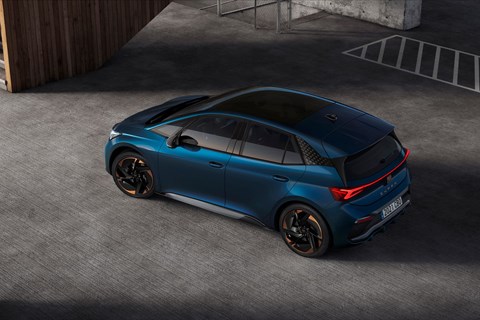
However, he closed his remarks by saying: ‘It’s great that we have a brand that’s focused on combustion cars, which is safe. SEAT will continue in the future […] certainly as long as there are combustion cars. The future of SEAT in a post combustion world? In an electric world? That’s still under discussion. And I say under discussion – there’s no decision being made.’
That’s a rather open-ended statement. The way we see it, the Volkswagen Group has three possible decisions to make about SEAT. The first is to ditch the brand altogether and allow Cupra to carry the torch for the electric era. The second is to launch a range of dirt-cheap electric cars and morph SEAT into the Volkswagen Group’s equivalent of Dacia. The third is to modify SEAT into a micro-mobility supplier, which the company has already started exploring with its range of electric scooters.
Design and dynamics
Cupra says it trades on two things – its striking design language and its sharp driving dynamics. So, all its cars are super aggressive and they drive better than their VW Group peers. Jorge Díez, chief designer of Cupra, addressed the matter of styling, saying: ‘When you have a past, you have to keep somehow the DNA or the genetics of a brand. When you create a brand from scratch, you can reinvent yourself.’
In addition to aggressive cues such as the new triangular light signature rolling out across the range, the Cupra line-up also mixes-and-matches body styles. It’s a practice present across the model portfolio, from the Formentor all the way to the DarkRebel concept shown alongside the Tavascan.

‘This is a key of Cupra as well,’ Díez agrees. ‘The Formentor is a mix of two different animals. On the lower part you have an SUV, above you have like a sleek hatchback. Take the Tavascan; you have this coupe on the back so it’s not the difficult boxy SUV, it’s much more emotional.’
Don’t expect the same ‘Russian doll’ styling language increasingly seen in cars such as the Mercedes EQ range. While a brand identity is crucial, Díez is keen to make each car stand out. ‘What we want don’t want to do is multiply or copy the same elements in all the cars. We believe that every car should have its own personality: much stronger, always with the DNA of Cupra,’ he says.
‘You will see that it’s not a scale of a big car to the small one. Everything has to have its own personality very strong, because you know, we lose the “wow effect” when you start repeating yourself. You need to innovate all the time.’
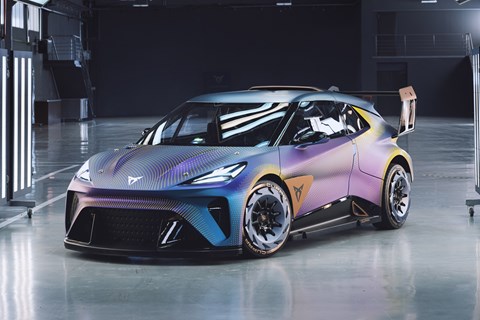
Griffiths is also adamant that his cars will always be for drivers. As an example, he offered his thoughts on Cupra’s cockpit design, saying: ‘the digital experience in the car, the whole cockpit thing. I mean, do you put something inside so that everybody in the car can have fun and be democratic? No, we don’t do that at Cupra – it faces the driver, it’s for the driver.
‘Is that egoistic? Yes, it is and it’s for the driver and if you don’t like it, go and buy something else. It’s okay. And we’re not going to have the car that drives itself and the steering wheel disappears. So Cupra will always have a steering wheel. We do cars for car drivers who love driving cars.’
Business
Behind the copper and the buzzwords, Cupra has a strong product portfolio suited to the new demands of the automotive industry. Most importantly, though, it understands its audience. It’s targeting Gen Z drivers – and it’s trying to win the cohort’s trust by engaging with them on the channels they find the easiest to use. So, Cupra’s all about social media and digital communications. It even has its own space in the Metaverse for crying out loud.
Climate responsibilities weigh heavy on Cupra’s conscience, too. But it’s tackling that with innovative eco-friendly production methods. The DarkRebel previewed two – 90 per cent recycled bamboo floors and 3D metal printing which dramatically cuts down on the amount of swarf waste from subtractive manufacturing processes. A happy side effect of these choices is that they’ll attract increasingly discerning consumers.
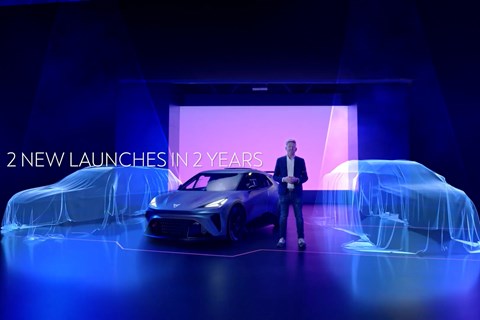
‘I think because we’re small as an organisation that makes us incredibly agile,’ explains Griffiths. ‘We have great engineers and the good thing is we’re not just a manufacturing plant subsidiary, we have full function car manufacturer with our own design, our own development, increasing our own development capabilities, particularly around battery testing and things like that.’
There are links to the VW Group, present partly to keep costs down, (the new Tavascan, for example, will be built in a VW Group factory in Anhui, China), but the brand uses setup and design to make them as ‘Cupra’ as possible. ‘We use some Volkswagen Group synergies – which we need to be competitive – but we certainly always have the ambition to make Cupra something very special,’ Griffiths adds. ‘Just we did with the Cupra Born in terms of setup and chassis and steering. But in terms of design, we do what we want.’
What’s for sale right now?
Ateca

Cupra has now built a foundation for itself as a standalone brand, to the point it’s even started developing bespoke. Even a few years and a facelift on, the Ateca’s still a totally sound performance SUV. Loads of grip, quick and practical. It’s also a good few grand cheaper than a Volkswagen Tiguan R, despite being about 95 per cent the same car. Which isn’t to be sniffed at.
Read our Cupra Ateca review
Leon
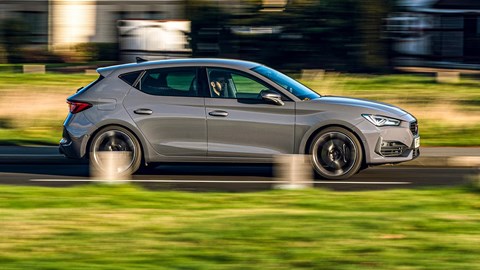
This is Cupra’s answer to the Volkswagen Golf GTE. A plug-in hybrid hatch that isn’t solely focussed on gaining you environmentally friendly points with your fleet manager. If you view the e-Hybrid as a hot hatchback that’s going to cost pennies to run, you’re going to be disappointed. But, if you approach this Cupra from the other end of the scale, as a comfortable, plug-in hybrid hatchback that occasionally uses it’s electric assistance to lighten up the mood, you have yourself a well-rounded, sporty-looking family car.
Read our Cupra Leon review

The spiritual beginning of the Cupra brand. It’s a distinctive-looking hatchback-on-stilts that will turn heads with its on-tiptoes stance and a badge none of your mates will have seen before. The coupe SUV concept is very zeitgeisty, and with its vast rear passenger space and big boot, practicality has not been sacrificed for style. It’s a distinctive body style wrapped in a cool design, and feels well-crafted and genuinely premium.
Rear our Cupra Formentor review
Born

The Volkswagen ID.3 is a common site on UK roads, but the Cupra Born isn’t – yet. Based on the same MEB running gear as Volkswagen’s electric hatch, the Cupra ups the driver engagement, the premium feel and generally makes things a little more special. Plus, Cupra is planning to launch a hot Cupra Born VZ in 2024 with 240bhp.
Rear our Cupra Born review
What’s next?
Tavascan

The Tavascan will be a similar size to the already released Volkswagen ID.4, Skoda Enyaq and Audi Q4-eTron, as it shares the same MEB platform. Our spy photographers have already captured ID.4 mules sporting Tavascan front ends, such is the technical similarity underneath the Cupra’s more engaging styling.
However, that doesn’t mean the Tavascan will handle too much like its MEB siblings. If our extensive testing of the Cupra Born has taught as anything, it’s that calibration and chassis-tuning can make the MEB platform extremely versatile. It’ll arrive early next year.
Read more about the Cupra Tavascan here
Raval
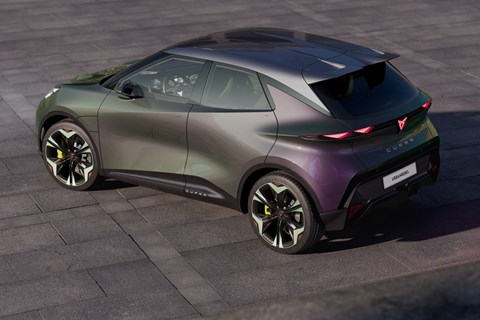
Compact, electric and front-wheel-drive, the new Raval is just 4.03m long (0.04m shorter than a VW Polo), and will sit on the Volkswagen Group’s MEB Small platform, which is also found under the new Volkswagen ID.2 electric supermini.
It sounds like the Raval will be little firecracker, too. It’ll have a 223bhp electric motor and a 0–62mph time of 6.9 seconds. Plus, the big-battery model will have a range of 273 miles, which is perfectly reasonable for an EV supermini. It’ll go on sale in 2025 and production should take place in Martorell, Spain.
Read more about the Cupra UrbanRebel here
Terrarmar
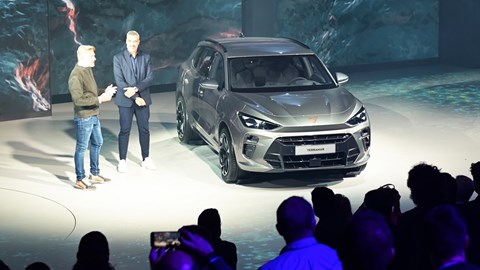
The Terramar is a sporty SUV that should appear around 2024. It’s the largest car yet from the SEAT spin-off and it’ll use hybrid – not pure electric – power. Shocking, given its stablemates. It’ll be built in Audi’s Gyor plant.
At 4.5 metres long, the Terramar will nudge just ahead of the Formentor in size but it’ll feature the same shark-like design language seen in the rest of the Cupra range. Like the new models revealed alongside it, the new Terramar features full-width brake lights at the rear, and a distinctive triple-triangle headlight signature at the front.
Read more about the Cupra Terramar here
DarkRebel
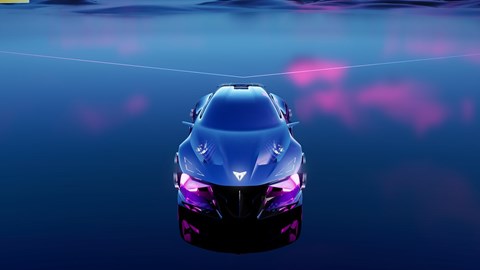
The DarkRebel was Cupra’s big gun for the 2023 Munich motor show. It’s a real life version of the digital car Cupra created for its metaverse platform with the help of 270,000 of its fans. It’s a two-seat shooting brake EV that uses aggressive aerodynamics and future-gazing production methods such as 3D metal printing.
It’s certainly the most extreme concept we’ve seen from the brand yet – but production isn’t out of the question. ‘My designers are not allowed to just go crazy out of the box and do the flying saucers and things like this,’ says Griffiths. ‘It has to be a car afterwards it has to have a possible platform. It has to have the possibility of being executed as a project in terms of package and availability of technology.’
We spoke to Griffiths at the IAA and he was adamant that he wanted to put the DarkRebel on the road. And normally, when Griffiths makes promises like that, he fulfils them.
Read more about the Cupra DarkRebel here